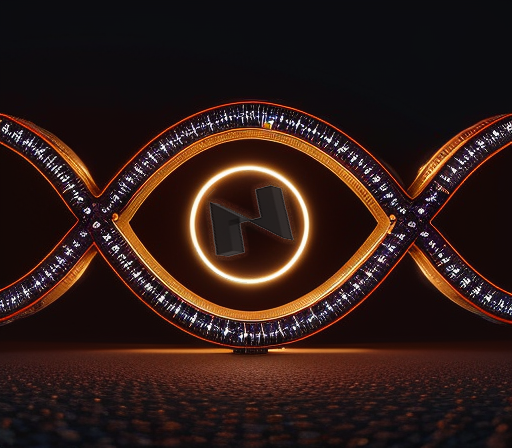Quantum Resistance: How New Cryptos Are Preparing For The Future Of Computing

Quantum computing is still in the early stages of development, but experts continue to highlight its potential dangers to the digital landscape. Among these dangers are the ability to break the encryption algorithms that currently protect cryptocurrencies. However, cryptographers are hard at work creating new algorithms that are designed to be resistant to this new threat. This article takes a closer look at quantum resistance and what it means for the future of cryptocurrencies.

What is Quantum Resistance?

Quantum computing takes advantage of the strange properties of quantum mechanics to perform calculations that are impossible for classical computers. Quantum resistance is the ability to withstand attacks from quantum computers. Quantum-resistant algorithms are designed to protect data and systems from being compromised by quantum computers.
Why is Quantum Resistance Important for Cryptocurrencies?
Most cryptocurrencies rely on elliptic curve cryptography (ECC) and RSA encryption, which are both thought to be vulnerable to attack by quantum computers in the future. Since many quantum-resistant encryption schemes already exist, it should be possible to swap the vulnerable crypto schemes for safer versions and avoid a quantum apocalypse.
How Are New Cryptos Preparing for Quantum Resistance?
Several new cryptos are already implementing quantum-resistant algorithms to protect their networks. For example, IOTA, a crypto-currency designed for the Internet of Things (IoT) devices, uses a hash function known as Winternitz one-time signature that is considered to be quantum-resistant. Another example is QRL, a quantum-resistant cryptocurrency that uses a lattice-based signature scheme.
The Future of Quantum Resistance
Post-quantum cryptography has been maturing steadily over the past few years and is now reaching a level of maturity where its deployment can be seriously contemplated. As quantum computers become more powerful, quantum resistance will become increasingly important for cryptocurrencies. Governments, businesses, and individuals will need to begin taking quantum resistance into account or prepare to face the consequences.## Quantum Resistance: How New Cryptos Are Preparing For The Future Of Computing
Executive Summary
The advent of quantum computing poses a significant threat to the security of many traditional cryptographic algorithms. However, several new cryptocurrencies are emerging that are specifically designed to be quantum-resistant. These cryptos employ advanced techniques such as post-quantum cryptography, lattice-based cryptography, and multivariate cryptography to ensure their longevity in the face of quantum attacks.
Introduction
Quantum computing is rapidly developing, and its potential to break current cryptographic standards is becoming increasingly evident. Traditional encryption algorithms, such as RSA and ECC, rely on the difficulty of certain mathematical problems to protect data. However, quantum computers have the potential to solve these problems exponentially faster, rendering current encryption methods vulnerable.
Quantum-resistant cryptos offer a solution to this threat. These cryptos utilize new cryptographic algorithms that are specifically designed to withstand quantum attacks. By incorporating advanced mathematical techniques, quantum-resistant cryptos aim to maintain the security and integrity of data even in the face of quantum computing advancements.
FAQs
- What is quantum resistance?
Quantum resistance refers to the ability of a cryptographic algorithm to withstand attacks by quantum computers. Traditional encryption algorithms are vulnerable to quantum attacks, as quantum computers can solve certain mathematical problems exponentially faster than classical computers. - Why is quantum resistance important?
Quantum resistance is important because it ensures the security of data in the face of quantum computing advancements. As quantum computers become more powerful, traditional encryption algorithms will become vulnerable, potentially exposing sensitive data to unauthorized access. - How do quantum-resistant cryptos work?
Quantum-resistant cryptos employ advanced mathematical techniques, such as post-quantum cryptography, lattice-based cryptography, or multivariate cryptography, to create algorithms that are resistant to quantum attacks. These algorithms leverage complex mathematical problems that are believed to be difficult for quantum computers to solve efficiently.
Top 5 Subtopics
Post-Quantum Cryptography
- Concept: Post-quantum cryptography refers to cryptographic algorithms that are specifically designed to withstand attacks by quantum computers.
- Important Pieces:
- Lattice-based cryptography: Utilizes the geometry of lattices to create algorithms that are resistant to quantum attacks.
- Multivariate cryptography: Employs systems of non-linear equations to create encryption algorithms that are resistant to quantum attacks.
- Hash-based cryptography: Leverages functions that are resistant to quantum attacks to create cryptographic algorithms.
- Quantum key distribution: Enables the secure distribution of cryptographic keys over quantum channels, ensuring the security of communication even in the face of quantum attacks.
Lattice-Based Cryptography
- Concept: Lattice-based cryptography utilizes the geometry of lattices to create cryptographic algorithms that are resistant to quantum attacks.
- Important Pieces:
- Short integer solution problem: Finding the shortest vector in a lattice is a computationally difficult problem that is believed to be resistant to quantum attacks.
- Learning with errors problem: Determining the secret in a noisy lattice is a computationally difficult problem that is believed to be resistant to quantum attacks.
- Ring learning with errors problem: An extension of the learning with errors problem that provides additional security against quantum attacks.
- Module lattice cryptography: Utilizes the properties of module lattices to create cryptographic algorithms that are resistant to quantum attacks.
Multivariate Cryptography
- Concept: Multivariate cryptography employs systems of non-linear equations to create encryption algorithms that are resistant to quantum attacks.
- Important Pieces:
- Multivariate quadratic equations: Systems of non-linear quadratic equations that are computationally difficult to solve, providing resistance against quantum attacks.
- HFEv-based cryptography: Employs the HFEv function, a multivariate quadratic function, to create cryptographic algorithms that are resistant to quantum attacks.
- Rainbow signature schemes: Utilize multivariate quadratic equations to create digital signature schemes that are resistant to quantum attacks.
- MQDSS digital signature algorithm: A multivariate-based digital signature algorithm that provides high levels of security against quantum attacks.
Hash-Based Cryptography
- Concept: Hash-based cryptography utilizes functions that are resistant to quantum attacks to create cryptographic algorithms.
- Important Pieces:
- Merkle trees: Tree structures that are resistant to quantum attacks and enable efficient verification of data integrity.
- Sponge functions: Hash functions that are designed to be resistant to quantum attacks and provide a high level of security.
- SHA-3: A hash function that is designed to be resistant to quantum attacks and provides a high level of security.
Quantum Key Distribution
- Concept: Quantum key distribution utilizes quantum channels to securely distribute cryptographic keys, ensuring the security of communication even in the face of quantum attacks.
- Important Pieces:
- BB84 protocol: A quantum key distribution protocol that utilizes entangled photons to distribute cryptographic keys securely.
- E91 protocol: A quantum key distribution protocol that utilizes entangled qubits to distribute cryptographic keys securely.
- SARG04 protocol: A quantum key distribution protocol that utilizes squeezed light to distribute cryptographic keys securely.
Conclusion
The development of quantum-resistant cryptos is a critical step in safeguarding data security in the era of quantum computing. By utilizing advanced cryptographic techniques, these cryptos ensure the integrity and confidentiality of data even in the face of quantum attacks. As quantum computing technology continues to advance, the adoption of quantum-resistant cryptos will become increasingly essential to protect sensitive information and maintain the security of online transactions and communication.
Keyword Tags
- Quantum Resistance
- Post-Quantum Cryptography
- Lattice-Based Cryptography
- Multivariate Cryptography
- Hash-Based Cryptography
- Quantum Key Distribution
